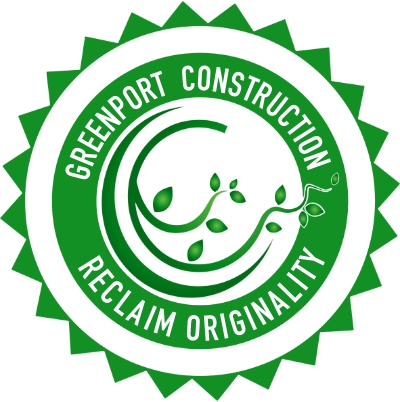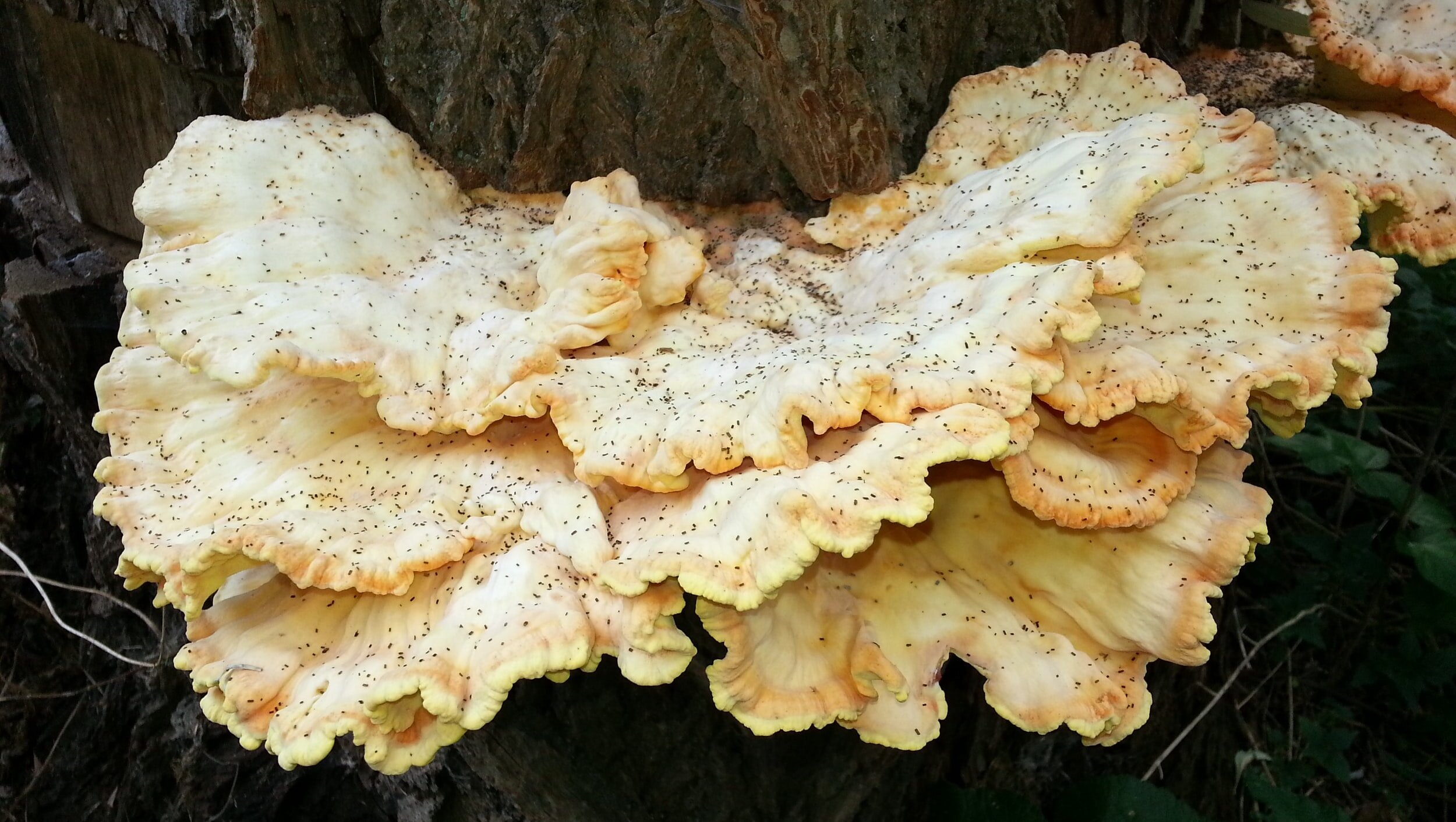How to Deal with Dry Rot + Wet Rot
The main threat to building with timber/wood is dry rot and wet rot. While both are similar fungi, each requires its own treatment so it’s a good idea to be familiar with identifying both, so the proper course of action can be pursued.
Wet rot tends to be the lesser of the two when it comes to severity, as the fungus is contained to only the wet areas. Whereas dry rot only needs moisture initially and can spread and grow to wood that isn’t wet.
Dry rot = Serpula lacrymans predominant in UK; Meruliporia incrassata in North America. Both are wood-eating fungi, but are separate species of brown fungus.
Treatments: remove the source of moisture (easiest), remove plaster on walls, apply fungicide, or replace the timber completely
Wet Rot
Starting with wet rot, as it’s typically lesser in severity than dry rot since it is confined to only the wet areas. There are a few different species of wet rot, but all are brown fungi and have a similar effect on wood. Both dry and wet rot needs moisture to breed and begin feeding off the wood, but wet rot requires a constant source of moisture in order to sustain itself. This can be anything from faulty plumbing to leaks in your roof that give the source of moisture. So dealing with this source of moisture is the main way to prevent the onset of wet rot. Once the source has been identified, you can begin to replace any compromised wood as well as fixing the source of moisture.
According to Wise Care Properties, when your building has the presence of wet rot, it will have a damp musty smell. The affected wood itself will feel softer and have a darker color than the rest of the wood and might have visible fungal growth on the exterior of the wood. Additionally, if the wood dries, it will be severely cracked and even crumble - which is why it can be so dangerous to a building’s structural integrity.
Both wet rot and dry rot survive by ingesting the wood - breaking down the cellulose and hemicellulose from the wood - which leaves the wood brittle and soft compromising its strength. However, dry rot has the ability to move greater distances in search of new wood, thus spreading at a much more rapid pace and to wood that isn’t wet (giving it its name). Due to this, dry rot is much more serious and being able to thwart it at its earlier stages is important.
Signs of wet rot:
Look out for localized fungus growing on timber.
Timber affected by wet rot will feel soft and spongy (even through a coat of paint) and look darker than surrounding timber.
When dry, the timber will easily crack and crumble into fine particles. It can also be susceptible to shrinkage.
Some types of wet rot cause the wood to bleach. This is common in doors and window frames.
Look for damaged or flaky paint. If the paint finish is damaged, this can increase the risk of wet rot. If you suspect wet rot and the paint is not damaged, push a thin-bladed knife into the painted timber. The blade should stop after a short distance. If it goes in up to the handle, it is almost certainly a sign of rot behind the paint.
Often wet rot is associated with a damp musty smell.
When no obvious fungus is present, wet rot can generally be identified and differentiated from dry rot by the different color of the decayed timber as well as the size and type of cracking by the timber as the wet rot progresses.
Dry Rot
The term wet rot is a bit of a misnomer, as it requires a source of moisture to begin reproducing. With that said, knowing the different stages of dry rot is important in order to properly treat and prevent future outbreaks.
Stages of Dry Rot
Spores - Wise Care Properties states that all properties have some degree of dry rot spores present, and are harmless unless given a suitable source of moisture and lumber. The wood will need around 20% moisture in order for the spores to begin feeding and reproducing.
Hyphae - once the spores find moisture and wood, it will begin to grow into fine white strains called hyphae. These hyphae strands allow the dry rot fungus to grow by consuming the cell walls of the wood and compromising its strength. If you are able to catch dry rot at this stage, it can be contained and dealt with much more easily.
Mycelium - Once the hyphae strands run out of wood to consume, it will begin to mass together into what’s called mycelium. The mycelium can move a great distance in search of a new source of wood. Mycelium will continue to grow in suitable, unchanging environments Due to this, dry rot at the mycelium stage can pose a very large threat to a building or home.
Sporophores/Fruiting Body - If the mycelium sense a change in its environment, it will begin to produce sporophores or fruiting bodies in an attempt to elongate its lifespan. The fruiting bodies, which are a reddish mushroom, will reproduce spores to search for moisture and wood, thus starting the lifecycle of dry rot all over again.
Dry rot lifecycle:
Spore - Dry rot begins as a tiny spore, almost invisible to the naked eye, but when in larger quantities it is an orange/rust color. These spores are present in most homes and are harmless until it finds wood and a source of moisture.
Hyphae - When the spores find a source of timber and moisture it will begin to grow into fine white strands called hyphae. These hyphae strands will feed off the timber by consuming the cellulose and hemicellulose of the wood, leaving behind a brittle and soft wood, thus compromising the timber’s strength. This is a critical point for treatment - if you can catch the dry rot still in its hyphae stage, it's much easier to contain and treat.
Mycelium - Once the hyphae have consumed and ran out of its initial timber, it will begin to spread in search of new wood. The hyphae strands will mass together to form a cotton-like substance called mycelium, which can move a considerable distance to find a new source of wood. This ability of the mycelium to grow at a rapid pace can pose a serious threat to a building if left untreated. In this case, the mycelium will look like a mass tangle of white small branches and will eventually start growing into fruiting bodies.
Fruiting Body - If the fungus begins to sense a changing environment, it will attempt to elongate its lifespan by forming sporophores, or fruiting bodies. These fruiting bodies will disperse new spores in the air, in turn starting the dry rot lifecycle all over again.
Being in the San Francisco Bay Area, you (and your home) are exposed to a considerable amount of moisture. This moisture can be the catalyst for various fungi to cultivate in your home’s timber. These fungi, commonly known as dry or wet rot, can have detrimental effects on your home’s wood, and can even compromise the structural integrity of your home if left untreated.
The team at Greenport Construction has treated its fair share of fungus rot wood and feel it’s important to familiarize yourself with it in order to take the proper course of action should you be faced with rotting wood in your home.
Before going into treatment, it’s a good idea to know the differences between dry and wet rot, as they do require different treatment options.
Treatment
Should you find the presence of either dry or wet rot in your home or building, it’s recommended to consult a professional to survey the property and begin the proper treatment steps.
Again with wet rot, hindering the source of moisture is most critical. From there you can use a fungicide on the affected wood, or if the wood is compromised, replacing it will be necessary.


